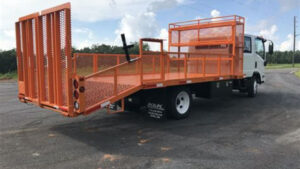If you are wondering about the value of your truck, NADA is a great resource to get an accurate assessment. NADA stands for National Automobile Dealers Association and provides comprehensive values for all kinds of vehicles, including trucks. NADA guides are widely used by dealerships, banks, insurance companies, and individuals to determine the true worth of a vehicle. Whether you want to sell, trade-in, or just know the fair market value of your truck, NADA has got you covered. Let’s explore how NADA calculates your truck’s value and how you can benefit from using it.
Factors that Affect Your Truck’s Value According to NADA
If you’re planning to sell or trade-in your truck, it’s important to know how much it’s really worth. One valuable resource that many people turn to is NADA, or the National Automobile Dealers Association. NADA has been providing reliable vehicle valuations since 1917 and can be a useful tool to determine your truck’s value. However, their valuations are affected by a variety of factors. Let’s take a closer look at these factors.
Year, Make, and Model
The year, make, and model of your truck is one of the primary factors that NADA considers. Naturally, newer models are generally worth more than older models. However, certain makes and models hold their value better than others. For example, a well-maintained Toyota Tacoma maintains its value better than a Chevy Colorado.
Condition
The condition of your truck is another crucial factor that NADA uses to determine its value. Trucks that have been well-maintained and are in excellent condition will fetch a higher price than those with cosmetic or mechanical issues. Regular oil changes, tire rotations, and keeping up with scheduled maintenance will help your truck retain its value over time.
Mileage
Mileage is another important factor that NADA takes into account. The more miles your truck has, the less it’s going to be worth. While this may seem obvious, it’s important to note that different models handle higher mileage better than others. A high-mileage Toyota Tundra, for example, may still have considerable value, while a high-mileage Chevy Silverado may not.
Market Conditions
Market conditions are also impactful to your truck’s value. This includes factors such as supply and demand, fuel prices, and economic trends. For example, if the market is flooded with a certain make and model of truck, it’s likely that it will have a lower resale value due to increased competition.
Modifications and Upgrades
Any modifications or upgrades you’ve made to your truck can also affect its value. While certain upgrades, such as a high-end sound system or custom paint job, may increase its value, others can decrease it. This includes things like lift kits, larger wheels, and aftermarket parts that don’t have original manufacturer warranty coverage.
Region
The region in which you live can also play a role in your truck’s value. This is because certain makes and models are more popular in certain regions of the country. For example, a pickup truck with four-wheel drive may be more desirable in a snowy, mountainous region.
Accident History
If your truck has been involved in an accident, this can significantly impact its value. Even if the damage was repaired, a vehicle history report will show its accident history. This can decrease a buyer’s confidence in the vehicle and result in a lower resale or trade-in value.
Equipment and Features
The equipment and features that your truck comes with can also affect its value. Advanced safety features like collision avoidance systems and rearview cameras are becoming increasingly important to buyers and can increase the value of your vehicle. On the other hand, trucks that lack basic features like air conditioning or power windows will have a lower resale value.
Timing
The timing of when you sell or trade-in your truck can also make a difference in its value. Typically, trucks are worth more in the spring and summer months when demand is higher. On the other hand, they may be worth less during the winter months when people are less likely to be shopping for vehicles.
Overall Market Trends
Finally, overall market trends can impact your truck’s value. For example, the recent trend towards electric and hybrid vehicles may make gas-guzzling pickups less valuable in the long-run. It’s important to stay up-to-date on these market trends to accurately gauge your truck’s value over time.
Image source: https://tse1.mm.bing.net/th?q=trucks+nada+value&pid=Api
Understanding NADA Truck Value
Many consumers who are interested in selling or buying a truck or any other vehicle may turn to the National Automobile Dealers Association (NADA) for guidance on pricing. The NADA is an organization that monitors the market and keeps track of the prices of new and used vehicles available for sale in the United States. It uses complex algorithms and data analytics to determine car and truck values based on various factors, including the make and model, mileage, features, and condition.
Factors That Affect NADA Truck Value
When you check the NADA value of your truck, you’ll need to enter some details about the vehicle to obtain an approximate market value. Here are some of the factors that affect NADA truck value:
Make and Model
The make and model of a truck can significantly influence its value. Some makes and models are historically more expensive than others, and this trend may continue based on demand, availability, and other market factors.
Age and Mileage
The age and mileage of a truck are among the primary factors affecting its value. A brand new truck will generally hold its value better than an older one with high mileage. However, certain older models may hold their value well due to rarity or nostalgic appeal.
Condition
The physical condition of the truck is critical in determining its value. A truck that has been well-maintained and regularly serviced will have a better resale value than one that has been ill-treated and damaged.
Optional Features
The optional features and accessories that a truck comes with can also affect its value. Trucks with advanced safety features, towing packages, and entertainment systems generally command higher prices.
How to Check Your Truck Value on NADA
To find out the NADA value for your truck, you’ll need to have some basic information, including the make and model, the year of manufacture, the mileage, and the condition. With this information, follow these steps:
Step 1: Visit the NADA website
Go to the NADA homepage, and click on the “Trucks” tab.
Step 2: Select Your Truck Type
Choose the type of truck you want to value, whether it is a pickup, van, or other commercial vehicle.
Step 3: Enter Your Truck Details
Enter the make and model, year of manufacture, mileage, and condition of the truck.
Step 4: Get Your Estimated Value
After inputting the necessary information, click on the “Get Used Value” button, and NADA will generate an estimated value range for your truck.
The Importance of Knowing Your Truck Value on NADA
Understanding your truck value on NADA can help you make informed decisions when selling or buying a truck. If you’re planning to sell, knowing your truck’s market value can help you set a fair price that is competitive with similar models in your area. On the other hand, if you’re looking to buy a truck, checking its NADA value can help you negotiate a fair price with the seller.
The Bottom Line
Knowing your truck value on NADA can help you make smart decisions when selling or buying a truck. Keep in mind that the NADA value is typically an estimated range, and the actual market value may vary depending on various factors such as location, supply and demand, and current economic trends. Nevertheless, referring to NADA can give you a good starting point for pricing your truck.
Factors That Affect Your Truck’s NADA Value
When it comes to determining the value of a truck, several factors come into play. While NADA is an excellent resource, it is important to have an understanding of the various elements that affect your truck’s NADA value. Here are five factors to consider.
1. Age of the Truck
The age of your truck is one of the most significant factors in determining its value. Generally, the older the truck, the lower its value. However, some classic or vintage trucks hold their value well, but these are the exception rather than the rule. Generally, when a truck surpasses five years of age, its value starts to decrease significantly. This depreciation is estimated to be about 15-20% annually. In other words, the older the truck, the less it is worth.
2. Mileage
Mileage is another crucial factor that determines your truck’s NADA value. Higher mileage trucks are generally sold at lower prices than low mileage trucks. The more miles a truck has, the more wear and tear it has experienced. This means that the vehicle’s components may need to be replaced, updated, or refurbished. High mileage also indicates a truck that has been used more often, indicating that it might need more repairs and maintenance than a low mileage truck.
3. Mechanical Condition
The mechanical condition of your truck is another critical factor that impacts your truck’s NADA value. If your vehicle has undergone regular maintenance and repairs and has no mechanical problems, its value is higher. On the other hand, a truck with significant mechanical issues that require significant repairs has a lower value. When you are selling your truck, ensure that it is roadworthy and mechanically sound.
4. Trim Package and Options
Year, make, model and mileage are not the only factors used when NADA determines a truck’s value. The NADA also takes into consideration other details about your truck such as its trim package and options. Trucks with premium packages and features often have a higher resale value than other models. The features and options that are typically considered include the truck’s transmission and driveline, interior and exterior features, entertainment and technology systems, and safety features such as airbags, anti-theft systems, and automatic brakes.
5. Vehicle History Report
The vehicle history report for your truck is essential when determining your truck’s NADA value. This report provides information about the truck’s accident history, any reported damage, and any previous owner’s legal claims or tickets for violations. A clean vehicle history report attracts buyers and increases the truck’s NADA value. Therefore, if possible, provide a vehicle history report to any potential buyers or dealerships to build trust and ensure the best possible sale price.
| Factors | Positive Impact | Negative Impact |
|---|---|---|
| Age of the truck | None | Depreciation |
| Mileage | Low mileage | High mileage |
| Mechanical condition | Good condition | Significant mechanical issues |
| Trim package and options | Premium features and packages | Standard packages and features |
| Vehicle history report | Clean vehicle history | Accident history, damage, legal claims or violations |
Here’s a relevant link for your article about “my trucks value nada”:
Pickup trucks are known for holding their value well, so it’s important to check out NADA’s values to get an accurate estimate for your truck.
Thanks for Reading, Folks!
So, there you have it – my trucks value nada. I hope you found this article informative and helpful. As a truck lover, it can be disappointing to see your ride go down in value, but it’s all part of the game. Don’t worry though, there’s always something better around the corner. Thanks for being here with me today, and make sure to visit again soon for more truck talk and all things automotive!


